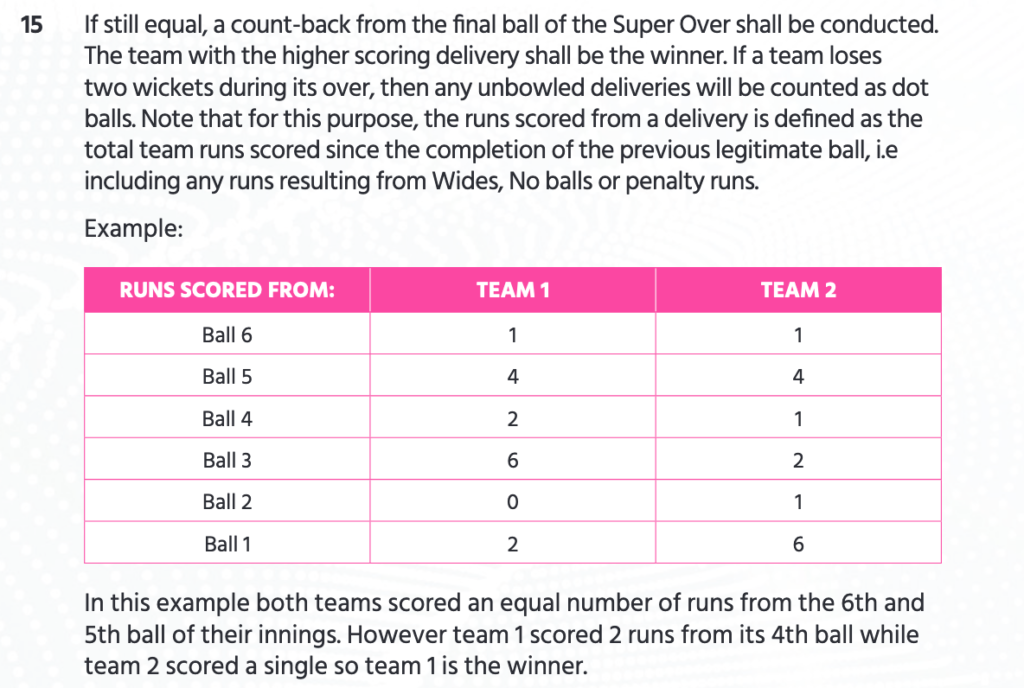Firstly, kudos to England on winning their first ICC Cricket World Cup. Both teams played like world champions and it seemed that none was willing to relent despite the pressure situation, obviously since both squads were aiming for their very first world cup success. Nevertheless, let’s say if I had to pick the quality of ground fielding I’d pick New Zealand over England. They were so solid at ball possession that at one time chasing a target of 241 seemed very daunting, no matter how good the running between the wickets was the Kiwis were making it harder to take twos. Then England needed 9 runs off the last 3 balls, and the overthrow gave them extra runs. That fateful overthrow from deep midwicket by Guptill, which hit Stoke’s bat on his second run and went for the boundary, will be long remembered. That opened the floodgates and clinched England that infamous tied score.
Going back in time, I feel for England when they were thrice runner-ups, in a sense of nostalgia, this world cup triumph of theirs was 40 years in the making! In 1979 England faced the mighty West Indies who won their second successive Prudential World Cup. Then in 1987, they were again outdone by Australia in the finals of the Reliance World Cup in Kolkata. Finally, in 1992, it would be Pakistan’s moment to lift the Benson & Hedges World Cup beating England. Their lowest point would probably be the 2015 world cup when England was eliminated in the group stage losing 4 of their 6 matches. All in all, the English were knocking the doors of world cup glory for ages, and it seemed odd for the birthplace of cricket to have never achieved this feat. Well, not anymore! Though I would have loved for them to win without all the hoopla and undue attention on the controversial boundary rule clearly meant for T20 cricket.
Background of The Boundary Rule
The entertainment value of the 2019 World Cup finals notwithstanding, as I mentioned, it came with its fair share of controversies and went down to the wire….or should I say the boundary. YES, I’m referring to the maniacal rule of the ICC in awarding the victory to the team that hit more boundaries in the match. So for the uninitiated, a boundary is not just the perimeter of the playing field but it is also referred to the scoring shot that a batsman hits to for four runs or over and beyond the perimeter for a maximum six runs. That disputable rule from Appendix F – Paragraph 13 says, and I quote:
In the event of the teams having the same score after the Super Over has been completed, if the original match was a tie under the Duckworth/Lewis/Stern method, paragraph 15 below shall apply. Otherwise, the team whose batsmen hit the most number of boundaries combined from its two innings in both the match and the Super Over shall be the winner.
ICC Men’s Twenty20 International Playing Conditions Effective 30 September 2018
Just in case if you’re wondering, that reference to Paragraph 15 further complicates matters in the event everything including the boundaries are tied despite the super-over. It’s so complicated that I just decided to post the screenshot from the rule book.

Not to lie but I was upset with the result of this final match. No one would like to watch the biggest game of the world’s biggest tournament is ultimately decided by a controversial rule, as opposed to a team’s overall performance. I focused my attention to Appendix F – Paragraph 13 and did some spreadsheet analysis to understand whether teams in the second innings of an ODI hold an undue advantage over hitting more boundaries. My general assumption was that teams chasing scores (in this case England) have the RR pressure in limited-overs cricket and they always run the risk of losing quick wickets in the process. Hence, teams chasing in the second innings would hit more boundaries on average than the team batting first to win the game. So I went back to all the 48 matches played so far in this world cup and made a list of the number of boundaries scored by every participating country. I was left astonished with the findings.
How England Triumphed Naturally
To begin with, my assumption about teams hitting more boundaries while chasing was completely misplaced. So here’s what I concluded in my analysis of the 48 ODI matches played in the 2019 ICC World Cup and why the situation in the finals was tailor-made for England’s victory right from their first match either by luck or design.
- If you consider Appendix F – Paragraph 13, England was always poised for victory on the basis of boundaries right from the word go. They hit the highest percentage of boundaries per match in the entire tournament with 15.61%. In other words, they had the highest share of runs scored through boundaries in each individual match than any other team. In comparison, New Zealand had a negligible 8.56% of boundaries hit in the championship.
- With reference to the above, England also hit the maximum number of boundaries than any other nation in this World Cup edition. At the end of that thrilling super-over in the finals, they had amassed 361 boundaries overall, the highest by any participating team. New Zealand could only manage 198, signifying that England as a team was always primed to score runs faster even before the first ball was bowled!
- Lastly, just to provide an indication of the strength of England’s top and middle-order batting in this World Cup, out of the 361 boundaries scored overall, the top 6 batsmen alone hit 318 of them including opener Jonny Bairstow who tops the list of batsmen with most boundaries hit 67 fours & 11 sixes. That’s an enormous 88% of the overall boundaries scored in this tournament for England! Except, perhaps for Kane Williamson who hit 53 boundaries (including 50 fours and 3 sixes) in this tournament, there wasn’t any other New Zealand player who came closer to striking the ball so productively.
This is one of the reasons why the ‘boundary rule’ for tied super-overs benefited England, but more so, one can’t ignore the reality that if it hadn’t been for New Zealand’s agile ground fielding and tight bowling the final would have been easily won by England without the necessity of the ‘boundary rule’. That it went down the wire was because New Zealand showed guile and sheer depth in their game.
Amending The Boundary Rule
I personally believe that Appendix F – Paragraph 13 in its current reading is biased towards that teams score boundaries and it has to be amended to bring a balance during critical circumstances such as the tied World Cup finals. In a nutshell, the rule seems to sideline run-scoring through running between the wickets in an ODI format of the game. As originally suggested this law is appropriate to a T20 format where scoring free boundaries are on offer and the powerplay is just 6 overs, however, in an ODI where ground fielding and overs are spread out over 3 power-plays scoring boundaries becomes challenging and losing wickets more frequent. Runs are achieved through running between the wickets and usually, teams master that skill immensely. Then when rules like Appendix F – Paragraph 13 come into the picture during crunch situations it pokes a hole into the theory of scoring runs through any means other than the boundary line which
Ultimately, this match combined with the boundary rule proved that bowlers and good bowling are not rewarded for winning in crunch situations. If you look at the game from the lens of Appendix F – Paragraph 13 then it indirectly suggests you need strong hitters who can send the ball over the boundary ropes all the time and running between the wickets would pale in comparison. Bottom line, on that big day, England had those big hitters and hence they did well eventually, while New Zealand relied more on singles and twos, they did the basics perfectly well, and yet they failed. I feel sad for them to have lost the match after uplifting their game. Unfortunately, they lost not because they were technically wrong, but because they were let down by a farcical law of cricket.


